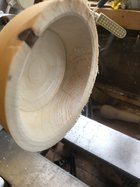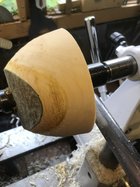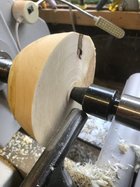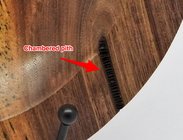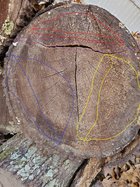Mostly I have to buy prepared dry wood for turning but I’ve just been given a few small logs- probably branches to those of you who get complete trees!
I bandsawed a flat for stability and then as seems to be correct cut out the pith- see attached. As the pith is vertical-and in this case neatly down the middle- what criteria should I consider for removing it. I simply cut the flat which determined the position of the cuts but obviously I could have cut the flat anywhere round the long side
What should I do with them now? At present they are in the outside drying store (with no sealant -yet).
Previous attempts at keeping them as logs and painting pva on the ends still resulted in splits when I came to work it.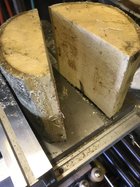
I bandsawed a flat for stability and then as seems to be correct cut out the pith- see attached. As the pith is vertical-and in this case neatly down the middle- what criteria should I consider for removing it. I simply cut the flat which determined the position of the cuts but obviously I could have cut the flat anywhere round the long side
What should I do with them now? At present they are in the outside drying store (with no sealant -yet).
Previous attempts at keeping them as logs and painting pva on the ends still resulted in splits when I came to work it.


